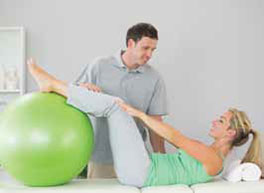
Made up of bone, cartilage, tendons, ligaments, muscles and fluid, the knee works like a complex machine. If one part of the machine is not working properly, intense discomfort can ensue. One of these system malfunctions is a bone marrow lesion, a microfracture or swelling in the soft bone right below the knee joint. In the past, this problem was treated with bracing, limited activity or extensive knee surgery that required up to eight months of recovery time. But thanks to a new procedure called subchondroplasty (“sub” comes from the Latin word for under or below, “chondros” comes from the Greek word for cartilage and “plasty” comes from the Greek word for mold), patients can experience relief and better mobility in a matter of weeks.
If you choose to undergo subchondroplasty, you will be put under general anesthesia. Your surgeon will make three holes in your knee and use imaging to visualize the exact location of the damaged bone. Then, he or she will inject a paste made of calcium phosphate (also referred to as “bone-void filler”) directly into that damaged area. After about 10 minutes, the paste will harden into a bone-like substance that can adequately support the joint, allowing the fracture to heal and the edema to subside.
While lower cost (the procedure runs about one-quarter the price of a traditional knee replacement) and minimized risk are certainly bonuses of subchondroplasty, perhaps the best thing about this new treatment for knee pain is the recovery process. Many patients are able to leave the 30-minute outpatient surgery on their own two feet. Some pain is involved, of course (after all, it is still surgery), so your physician may recommend rest, ice, elevation and pain medication.
Shortly after the procedure, you will begin physical therapy. We can design a controlled therapeutic program that includes exercising on a recumbent bicycle (nonweight-bearing), an elliptical trainer and a continuous passive motion (CPM) machine to improve the knee’s strength and mobility. Aquatic exercises are also useful because they take the weight off the knee.
This exercise regimen will get you moving on your newly improved knee as soon as possible by strengthening the muscles. If all goes well, the results of your subchondroplasty will last for many years, allowing your knee to once again work like a well-oiled machine!









